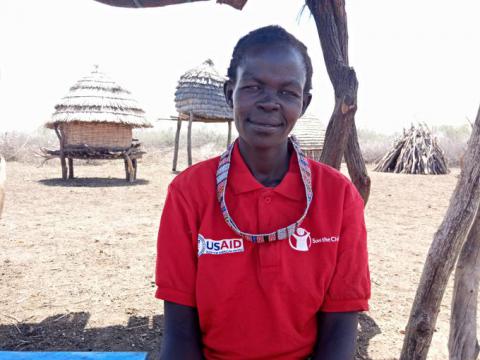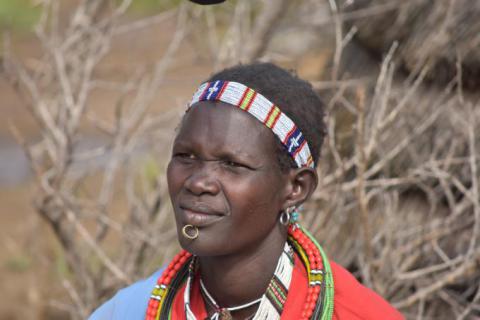Women saving lives of children in hard to reach areas
Kapoeta, South Sudan - Women humanitarians in South Sudan are not only the frontline workers putting their lives on the line to save others but doing whatever it takes to reach the ‘hard to reach areas.
This story is about women humanitarian pioneers working in remote village in Kapoeta, South Sudan. Food insecurity in South Sudan is one of the challenging concerns and often follows long periods of no rain which can lead to failed harvests. When people are not able to farm, the risk of malnutrition in vulnerable communities increases dramatically. This is further exacerbated by conflict, forcing people to leave their already-struggling crops in search for shelter and safety.
In Kapoeta, an increase in acute malnutrition in children can be attributed to widespread insecurity, displacement, drought, poor sanitation and hygiene, and poor access to services. This in turn has led to high morbidity in children and stunting in the longer term should they survive infancy.
In an effort to treat childhood illness and malnutrition, Save the Children’s women volunteers and Community Based Distributors in Kapoeta have stepped up humanitarian response to reach every last child. They help to identify, screen and refer malnutrition cases to Save the Children’s outpatient health and nutrition centers. They also carry out health education sessions for pregnant and lactating mothers in the area and often walk long distances to reach their posts. Along with nutrition screening, the health centres provide treatment for childhood illnesses like malaria, pneumonia and diarrhea.
Loluae, 32, is Save the Children health Volunteer and mother to six children. Her main source of income is livestock rearing and she cultivates sorghum on the side to make ends meet. The nearest health facility in her village is about 2 hours walk. When she gets to the facility, Loluae dedicates herself to screening children, and treating those who are found to be sick.
“They (Save the Children) taught me how to identify, difficulty in breathing, loss of weight/appetite, vomiting, frequent watery stools and fever in children and mothers who come to health facilities. Now I’m able to identify the sickness in children and give them medicine.”
“When a child is sick in this village, they bring them to me. At home I treat more than 20 children every month successfully”, Loluae concluded.

Another volunteer, Nakai, 32, was trained by Save the Children to screen children for malnutrition. To help her to do this, she was given a ‘MUAC’ tape which shows when a child is underweight – with green indicating a child is healthy, yellow that they are beginning to become malnourished, and red indicating severe malnourishment. Nakai also helps with home visits and provides support to families by influencing family members to support the mother with taking care of chidlren as well as the housework.
“I embrace the opportunity to serve the people of my community and save children’s lives. I feel happy when children are treated and saved from malnutrition. It’s my happiness to work with Save the Children as a community Nutrition Volunteer”, said Nakai.
Save the Children has reached over 79,900 community members with nutrition messaging and counselling to date as part of a prevention package aimed at reducing the alarming rate of malnutrition in Kapoeta. As of March 2019, over 53,000 children have been reached. Thanks to our donors, UNICEF and USAID/OFDA.
By Tito Justin/Save the Children
 South Sudan
South Sudan 